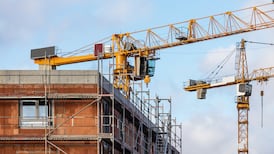The European Union has launched a review of key technologies including top-end microchips to decide whether trade protections are needed to stop critical know-how being acquired by rival powers.
The move is a further step away from the EU’s past emphasis on trade liberalisation towards an approach that attempts to tailor economic ties to strategic geopolitical considerations, after vulnerabilities were exposed by the Covid-19 pandemic and Russia’s invasion of Ukraine.
On Tuesday the European Commission recommended that risk assessments be performed together with the 27 EU member states to determine how to protect four technologies identified as the most sensitive.
The technologies are advanced semiconductors, artificial intelligence technologies, quantum technologies and biotechnologies, which include genetic modification techniques.
READ MORE
These were selected as they represent the “most sensitive and immediate risks related to technology security and technology leakage”, the Commission said in a statement.
It is unclear what steps the risk assessments could recommend to protect the technologies. Mooted ideas include potential trade bans and the screening of outward investment into overseas countries, though these are likely to be opposed by some EU member states.
The European commissioner for the internal market, Thierry Breton, said the risk assessments would determine “what we need to do, which kinds of partners we need to work with”.
He insisted that the United States, Australia, and Japan have comparable lists of key technologies that are subject to special consideration and that the EU was merely falling in line.
“Europe stays open for business. But we’re being a bit less naive here. And we’re going to protect our security interests,” Mr Breton told reporters.
The EU has hardened its trade policies after experiencing shortages of medical and vaccines supplies during the Covid-19 pandemic and an energy shock when Russia reduced gas supplies after invading Ukraine. Both lessons led to a new determination that critical supply chains should not be vulnerable to unreliable suppliers.
“We all see that what can be the risks of too much dependency, be it during the Covid pandemic, or now with the Russian war in Ukraine,” European Commission vice-president Vera Jourova told reporters.
“Europeans have paid the price of this. So our approach will allow Europe to make strategic investments in its own competitiveness and nurture our technological edge, and it will allow us to get prepared for the worst case scenarios in the future.”
Both officials insisted that the measure was not directly targeted at China. However, China is a key focus of the EU’s efforts to “de-risk” its supply chains, an effort led by Commission president Ursula von der Leyen.
This is due to concerns about the potential economic fallout if there was a severe shock to relations, such as a conflict over Taiwan, as the EU and Chinese economies are profoundly linked.
The move came as the European Parliament approved a new tool that would allow the EU to retaliate with trade restrictions if it deems a foreign country is attempting to pressure one of its member states through “economic blackmail” or coercion.
As part of the same strategy, the EU is also preparing a law that would reduce its dependence on overseas suppliers for critical raw materials, which are key for technologies including smartphones and electric car batteries.
The Commission has recommended that the risk assessments be completed by the end of this year, and said that there are six further technologies that may be reviewed in the future.
[ Are the EU and China edging towards a trade war?Opens in new window ]
Advanced semiconductor technology includes microelectronics, photonics, high frequency chips, and semiconductor manufacturing equipment; while artificial intelligence tech includes high performance computing, cloud and edge computing, data analytics, computer vision, language processing, and object recognition.
Quantum technologies covers quantum computing, quantum cryptography, quantum communications, quantum sensing and radar; while biotechnologies includes techniques of genetic modification, new genomic techniques, gene-drive, and synthetic biology.
















